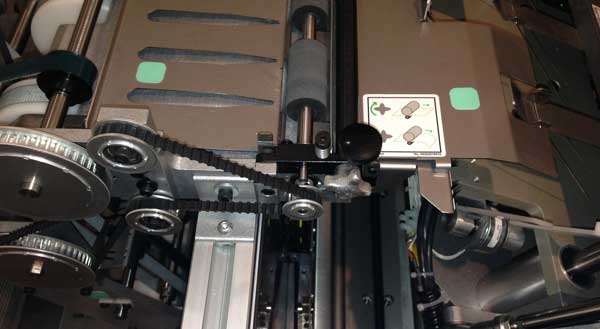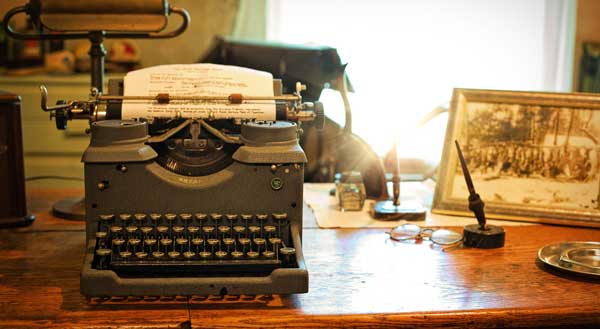Self Publishing vs. Traditional Publishing: Pros and Cons

What are the pros and cons of self-publishing vs. traditional publishing? If you’re a new nonfiction author both paths can prove to be very rewarding, depending on your personal circumstances.
In this article, I’ll make a case for both options and describe the ideal author for each. I’ll also delve into the pros and cons of self-publishing vs. traditional publishing so that you can identify which option is best suited to your needs.
The World of Book Publishing
We all know that traditional publishing has been around for a long time. But, what you probably don’t know is that self-publishing has been around for a long time as well.
For example, Charles Dodgson (a.k.a. Lewis Carroll) self-published the first edition of his manuscript, Alice in Wonderland, in 1865. Yes, he actually paid for the first print run of 2,000 copies out of his own pocket!
The book was produced at the print shop of Oxford University Press during his tenure as a mathematics lecturer at a nearby college. In fact, a copy of his first print run can be seen on display at the printer’s museum.
Book Publishing Then and Now
A lot has changed in the world of publishing since then, as both traditional as well as self-publishing continued to slowly evolve. Yet, the greatest transformation in the industry has been taking place just over the past two decades.
The main change agents have been, in approximate chronological order:
- The commoditization, miniaturization and cost reduction in personal computing
- The introduction of low-cost and no-cost word processing software
- The rapid expansion of the world-wide-web
- The creation and subsequent hyper-growth of Amazon.com
- The development of high-speed high-quality digital on-demand printing equipment
- The introduction of Web 2.0-based free online publishing services
- The development of low-cost worldwide digital book distribution channels, both online and offline
- The migration of offline book search and discovery to online search engines
All of the above forces have caused a leveling effect on the publishing playing field.
Nowadays, a quality self-published nonfiction book with the correct implementation of search engine strategies can appear side-by-side a traditionally published book in an online bookstore search.
But there’s a question that’s as valid now as it was then: is it better to be traditionally published or to self-publish? Let’s answer this question below.
Self-Publishing

The world of self-publishing has evolved dramatically since the publication of Alice in Wonderland.
For a great many of those years, the main driver behind the reluctance by authors to embrace self-publishing was the fact that you had to foot the entire publishing bill from conception to finished books shipped to your doorstep.
Even if you managed to do all the production work yourself, you still had to pay for large expensive offset print runs (which were the only option before the advent of low-cost digital printing) and then you needed to foot the recurring bill for inventorying your books in warehouses for months or years.
And most of these costs were incurred before you made a single sale!
Today, self-publishing and worldwide book distribution channels are very inexpensive both for digital as well as printed books, and they’re easily accessible to all with extremely low barriers to entry.
Anatomy of a Self-Published Author
Self-publishing requires a certain mind set and it’s certainly not for everybody (although everybody could technically do it).
First of all, you have to be a risk taker, because unlike traditional publishing, you’re taking on all the financial risk without knowing if you’ll ever get a return on your investment.
Therefore, self-publishing is best suited for someone with an entrepreneurial spirit.
You have to be prepared for the fact that sometimes it’ll feel like all the planets are aligned, and sometimes it’ll feel like the Wild West – and very often this will happen back to back!
For instance, you may have a deadline to submit your completed manuscript to your busy in-demand book designer on Monday only to find out last minute that your editor became violently ill over the weekend, when she was supposed to complete the final proofread.
Not unlike running any other type of business the stakes can be high, but so can the rewards. Now that we got that’s out of the way, let’s summarize the pros and cons of self-publishing:
Self-Publishing Pros
- 100% control over all book rights (e.g. right to publish in any and all formats, translations, derivative works, film and TV rights, licensing rights, international rights, distribution rights, etc.)
- 100% creative control (e.g. book cover, book inside, choice of title and sub-title)
- 100% control over all publishing decisions (e.g. publication date, publication timeline, etc.)
- 100% control over book pricing (e.g. list prices in all currencies for all territories)
- 100% control over all book marketing and promotion decisions (e.g. when and where to launch, choice of marketing and promotion channels, media appearances, etc.)
Self-Publishing Cons
- High financial commitment up-front (e.g. a professionally produced 50,000-word nonfiction paperback could cost anywhere between $5,700-$11,500 depending of the level of experience of the publishing sub-contractors)
- No guarantee of a return on investment (the above costs are before any book sales can be generated)
- You’re responsible for all aspects of the publishing process (e.g. book writing, production, marketing and promotion, distribution, sales, accounts payable and receivable, etc.)
- Need to search for, screen, interview and hire multiple publishing sub-contractors (e.g. editors, book layout specialists, cover designers, book marketing professionals)
- Higher overall stress than traditional publishing
Self-Publishing Summary
Self-publishing can be a highly rewarding experience for nonfiction authors if done right (i.e. hiring professionals where needed instead of following the DIY approach).
The upside can be tremendous because there are very few middlemen taking a cut from your profits (mainly distribution fees and wholesale discounts for bookstores).
Yet, it’s not for everybody. If you need peace of mind in the knowledge that someone else is taking care of all the details, the traditional route may be a better fit for you.
Having said that, there are a number of reputable author services companies that will manage the entire project on your behalf and do all of the professional work in exchange for a fee (full disclosure, I own one such firm).
This is a happy medium if you have a budget to work with and still wish to retain 100% control over all publishing aspects. But if money is an object, you may need to consider the traditional route instead.
Traditional Publishing

The world of traditional publishing affords authors a much more stable platform for developing and launching books. Plus, most traditional publishers have deep roots with booksellers, often meeting with them on a regular basis to pitch their titles.
Traditional publishers also have longstanding relationships with journalists and the media at large as well as with event managers, which allows their authors to receive preferential treatment in those circles compared to self-publishing authors.
Finally, traditional publishers take on most of the financial risk for your book project (save for some cost-sharing in the marketing and promotion area) plus they employ or have contractual relationships with all the required book production experts.
The flip side of being granted the above advantages is a very high barrier to entry. In order to protect their investment, traditional publishers tread very carefully when it comes to selecting the authors they want to work with.
Having said that, there are shortcuts available. For example, if you’ve already developed a large group of followers over the years in your business or practice, say, through blogging, the barriers to entry can be lowered significantly.
How? For example by proving to the publisher that you’ve built up a large highly engaged email list that you’ve been nurturing for years. We’re talking no less than 10-15 thousand subscribers.
If 40% of those people are eager to buy your book (because they know you, like you and trust you), that’s between 4,000 and 6,000 sales generated just from your email list.
If you then add word of mouth into the equation plus other more traditional promotion methods, now you have a serious business case to mitigate risk for the publisher.
If your total demand ends up doubling your initial sales to say 12,000 copies at an average of $14.99 for the paperback and hardcover editions, now you’re talking about publisher gross revenues in the $180,000 range.
In summary, traditional book publishing is all about financial risk mitigation. The more evidence you can produce that clearly demonstrates your ability to mitigate this risk, the higher your chances of being signed by the publisher.
Anatomy of a Traditionally Published Author
As an author pursuing the traditional publishing route, you’re not looking for large profits, at least not initially.
Only famous authors command large advances on royalties; everyone else gets an amount in line with their historical sales – if your previous sales have been modest, so will be your advances.
This will remain the case until your book sales increase. Publishers are business people and as such they are strictly driven by data. The more promising the sales data the larger the eventual payouts.
Also, you may not have the patience or the inclination to deal with the minutiae of book production (you rather leave all of that to your publisher), but you have to be very comfortable with all aspects of book promotion.
So, you have to be comfortable in front of the cameras, microphones and live audiences. You have to be comfortable in a studio, on a stage and as part of a panel discussion.
You have to enjoy public speaking and know how to act in an interview – always actively listening to the reporter and speaking in sound bites that are easy for audiences to digest.
Traditional Publishing Pros
- All up-front costs are covered by the publisher (e.g. editing, book and cover design, project management, print runs, etc.)
- The publisher pays the author an advance on royalties on signing
- It’s much easier to get your book reviewed by reputable organizations (the vast majority of high-profile reviewing agencies are known to only review traditionally-published books)
- It’s easier to get media attention (e.g. publishers spend years developing relationships with media producers and journalists)
- Traditional publishers handle all the legal and technical complexities surrounding intellectual property rights and licensing (e.g. foreign rights, translation rights, distribution rights, media rights, etc.)
Traditional Publishing Cons
- Very high barriers to entry for new authors (unless they bring a built-in audience to the table)
- Much lower royalties (in exchange for taking on all the risk)
- You have to grant publishers all rights to your work for an extended period of time, usually many years after publication (again, in exchange for taking on all the financial risks)
- All final creative decisions regarding your book are made by the publisher (e.g. book title, cover design, book design, book content)
- Lengthy publishing process (your book is placed in a queue of multiple book projects, all being time-shared by the same staff)
Traditional Publishing Summary
Traditional publishing is not meant for those who like being in control. It requires handing over most functions outside of writing and book promotion to other people.
It is meant, however, for those who do not want to involve themselves in the minutiae of book production, negotiations of rights and distribution contracts, and all the idiosyncrasies of having to operate a business.
However, it has high barriers to entry for new authors, although this can be mitigated by bringing to the table a built-in audience developed through other activities (such as blogging, media outreach and even prior self-published books that were successful in the marketplace).
In Conclusion
In my opinion, traditional publishing and self-publishing are no longer competing avenues, but complementary ones. Each one is meant for a specific type of author personality, and although both have pros and cons, they’re equally viable routes for nonfiction authors.
The age of the stigma of being self-published and the elitism of traditional publishers is over in my view. Each path demands different pre-requisites and both are equally rooted on a solid foundation.
In fact, they’re now as intertwined as they’ve ever been, with many successful self-published authors transitioning to the traditional publishing world once the economies of scale demand that this transition take place.
I hope this article gives you a clear picture of where to go next with your book project.
Best of luck!
If you enjoyed this article and are in the process of self-publishing a nonfiction book, be sure to check out my free nonfiction success guide, drawn from years of experience editing books for bestselling authors (including a New York Times bestseller) and ghostwriting for CEOs and politicians. Simply click here to get instant access.
Ben
Leave me a comment below if you have any questions or a specific need that I can help you address – I operate an author services firm that specializes in helping entrepreneurs, professionals and business owners who want to publish books as a calling card for prospects, to establish their status as an expert or to just to generate additional leads for their businesses.
Here are some related posts I highly recommend:
How to Write a Compelling Book in 12 Steps: A Must-Read Guide for Nonfiction Authors
How to Grow Your Business Writing a Nonfiction Book
Write Your Own Book and Become an Expert: 11 Reasons Why You Should

Bennett R. Coles is an award-winning author of six books published through Harper Collins (New York) and Titan Publishing Group (London). He is also the publisher at Promontory Press, editor for multiple bestselling authors (including a NY Times bestseller), ghostwriter for CEOs and politicians and the founder of Cascadia Author Services, a boutique full-service firm that specializes in premium author services specifically designed for busy professionals. Our end-to-end services include writer coaching, ghostwriting, editing, proofing, cover design, book layout, eBook production, marketing, printing and distribution.
2 responses to “Self Publishing vs. Traditional Publishing: Pros and Cons”
-

I would like you to see you make a comparison between Amazon KDP paperback self-publishing and traditional publishing in terms of ease of publishing, marketing and selling (through Amazon), and return on investment to the author.
-

Very informative.







Leave a Reply